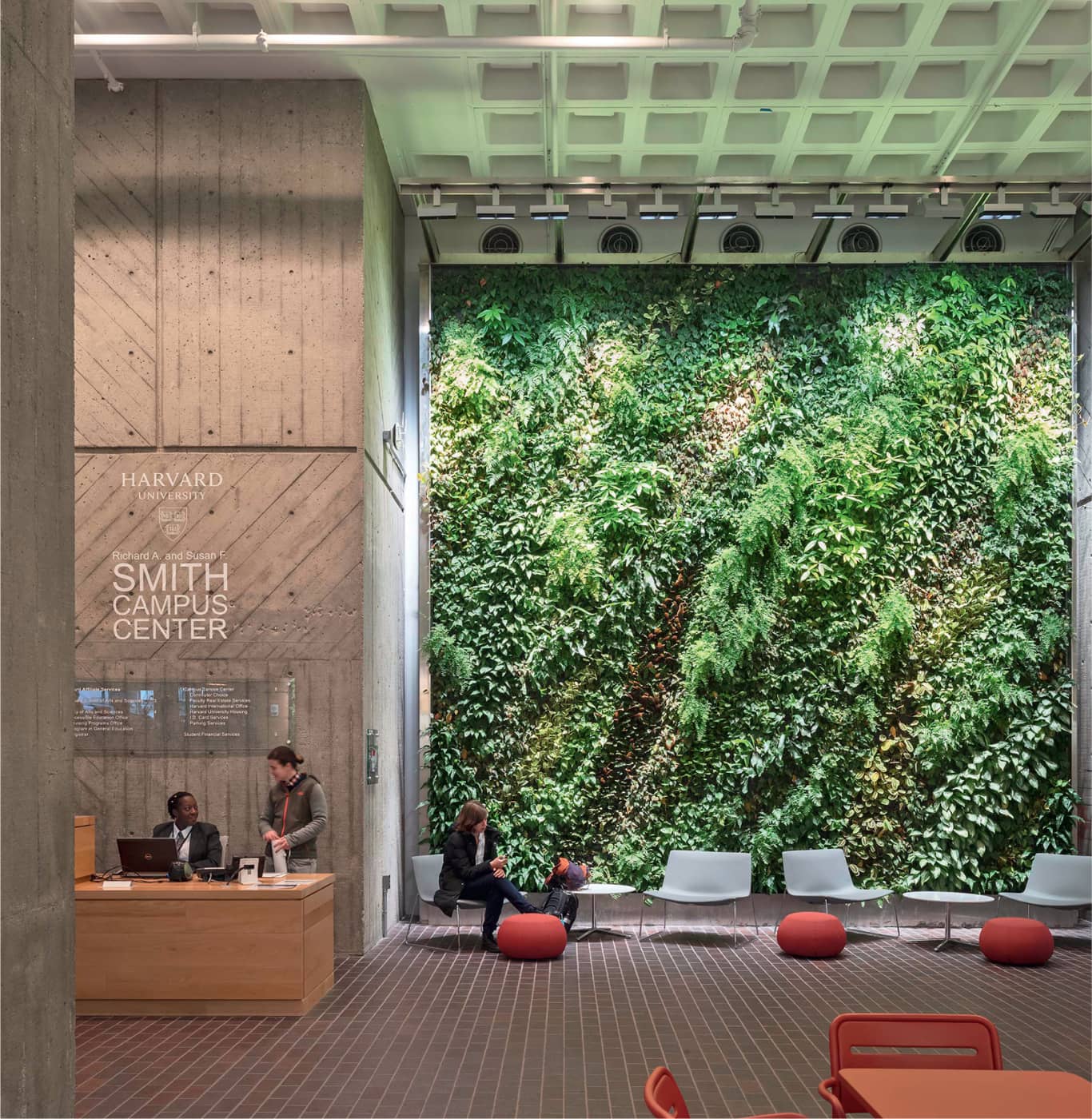11 Biophilia
The innate biological connection of humans to nature.
Further Reading
William Browning, Joseph Clancy, and Catherine Ryan. “14 Patterns of Biophilic Design Improving Health & Well-Being in the Built Environment.” www.terrapinbrightgreen.com/reports/14-patterns/
Popularized by psychoanalyst Erich Fromm in the 1960s, the word biophilia (from bio, meaning “life,” and philia, meaning “friendly feeling toward”) describes our innate biological drive for self-preservation. Biophilic design is believed to improve psychological and physiological health by decreasing stress, decreasing recovery time from illness or injury, and improving creativity and productivity. In the workplace, this can also lead to fewer employee sick days, which saves companies funds annually.
Many designers assume that adding plants is all that is needed, but biophilic design is most successful as a multisensory experience. For example, designing with a combination of natural elements—a green moss wall in an office, an abundance of large planters, natural light, windows to bring the outdoors in, water elements (such as fountains), and even sounds and scents of nature—can improve living conditions.
Examples of biophilic design include
Light
Maximizing natural light, adding lighting systems that change throughout the day to mimic circadian rhythm, increases visual comfort.

Plants
Adding green walls, inserting planters, connecting to the outdoors through rooftop gardens and outdoor dining, and moving work outdoors amid seasonal vegetation.

Air
Thermal and airflow variability impacts comfort, well-being, and productivity, and improves concentration.

Water
The presence of water features, such as fountains, reduces stress, provides feelings of tranquility, and lowers heart rate and blood pressure.

Sound and Smell
Sounds and scents of nature—breezes, leaves rustling, water babbling, birds chirping, and the fragrance of flowers and trees. Atmospheres can be simulated with billowing fabric that moves with the breeze, reflections of light or water on a surface, or mechanically released oils or scents.


A living wall and natural materials provide a tranquil sanctuary from college life in this nook at the refurbished Smith Campus Center at Harvard University in Cambridge, Massachusetts.
Materials
Natural materials, highlighting wood grain and veining of stone, wool, cork, and leather. The exclusion of materials with perceived toxicity, such as plastics, vinyls, and so on.

Art and Patterns
When all else fails, adding art with nature themes or colors found in nature can help increase the biophilic elements in a space. The same goes for patterns. Our brain associates the use of biophilia in patterns and fractals in nature-based designs with living things.


The Farnsworth House, 1951, by Ludwig Mies van der Rohe, utilizes subtle wood grain as an organizing device and travertine as an anchor material, while transparent glass and sheer curtains highlight the relationship of interior to exterior, and to the river beyond.
